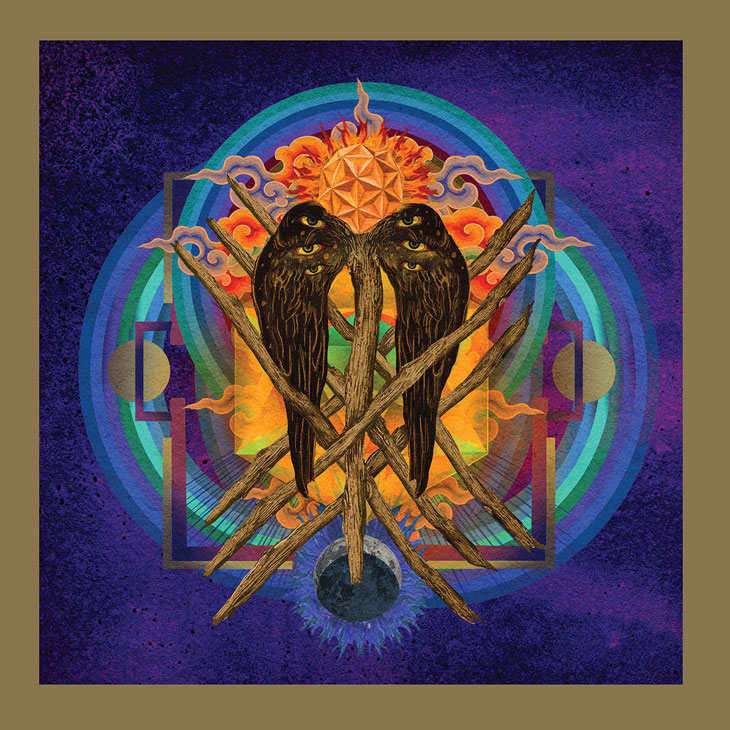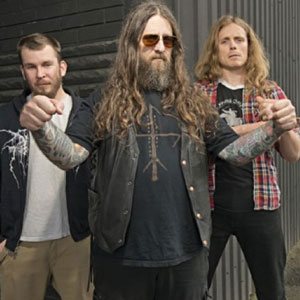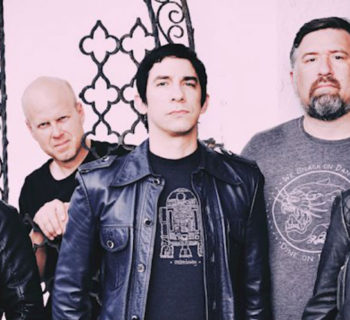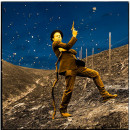“See the seer/The original face/There is nothing else/This is all there is” – Original Face
In season two of the kids show, Avatar: The Last Airbender, Guru Pathik teaches the main character Aang about the seven chakras to complete his training as the Avatar: Root (Muladhara), Sacral (Swadisthana), Solar Plexus (Manipura), Heart (Anahata), Throat (Vishuddha), The Third Eye (Ajna), and the Crown (Sahasrara).
He explains that each is a swirling center of energy with a color, an emotion, and a reason for blockage: security and fear, desire and guilt, confidence and shame, love and grief, truth and lies, reality and illusion, worldly attachment and self-realization. It’s only by accepting and embracing these darknesses that one can restore balance to each and be a fully realized person. Michael Scheidt understands the concept well and uses it to profound effect on YOB’s newest doom metal meditation Our Raw Heart.
Written while Scheidt was in the hospital for acute diverticulitis – a period where he had to face his mortality directly - Our Raw Heart is Kubler-Ross’s five stages of grief gone to India, reading tantra, and stretching the five stages to seven, lining up with each chakra in both emotional content and narrative function. Starting at fear, and moving all the way to worldly attachment, the album plows through each emotional barrier toward enlightenment with a monotonous transcendence of sound that is as much an ode to stoner doom greats Sleep and psychedelic rock, as it is to Tuvan throat singing, and repetition of the syllable “ohm.”
Each track moves at a snail’s pace. If the album owes a great debt to Hinduism in aesthetic, though, its instrumentation is all Buddhist austerity. Relying on the simple brutality of guitars, bone-throttling bass, and contemplative drums, mired in swamp-like footsteps of anaphoric repetition, taking minutes to progress from one chord to the next, the album takes its time to elaborate its emotional simplicity with rich character. The sludge is airy and spacious. It sounds like Lotus blossoms, vertiginous flowers, sandalwood, and Murti statues of the gods garlanded with bright purple flowers and skulls in the heart of a thick, humid jungle where the heat and color are an act of reverence steeped in indolent torpor. Moments of light amidst the storm provide welcome contrast as psychedelia keeps everything fresh and balanced.
Relying on the simple brutality of guitars, bone-throttling bass, and contemplative drums, mired in swamp-like footsteps of anaphoric repetition, taking minutes to progress from one chord to the next, the album takes its time to elaborate its emotional simplicity with rich character.
Marrying simplicity of composition to these vibrant traditions allows for graceful transitions despite the pummeling sound. As barrages of triplets hits you on “The Stand,” or “Raw Heart” plays the same chord for three straight minutes, you are moved toward enlightenment… while not moving at all. The layers of guitars, bass, and gargantuan drums make every effort to erase you from existence.
As we progress, the album takes on a narrative of sounds and image. We start in darkness, a gluttonous mire of fear, guilt, and shame on “Ablaze,” “The Stand,”, and “In Reverie”, each the heaviest tracks. As the three earthly chakras are cleansed, we are given the ambient breather “Lungs Reach” in preparation for the astral plane. From this point forward, Psychedelia is married to brutality on “Beauty in Falling Leaves” clocking at 16 minutes. The ”all hope is lost” moment quickly follows with album highlight “Original Face.” Then, finally, enlightenment is attained, and worldly attachment let go on the light and emotionally free “Raw Heart.”
The lyricism is elliptical and beautiful, evoking Vajrayana texts like the Tibetan Book of the Dead, Hindu epics like the Ramayana, the Mahabharata, the haiku of Basho, and Shinto practices and traditions which put an emphasis on nature, impermanence, and circularity. Scheidt’s fondness for these traditions shines through and gives a distinct character to a genre that is often ambivalent about such concepts.
Within the tradition of doom metal, monotony of sound is used to bring out tonality and character. By repeating the same chord progression for minutes on end, destroying your ear drums, you are opened to the layers of sound in that chord, you are induced to trance. Subtle gradations of distortion, overtones, and timbre that one chord can muster reveal themselves. You become one with the granular expanse of the crash cymbals and the long, drawn out bass. Time slows down.. It is a meditation. A chordal “ohm,” distilling the essence of the music into a single point that goes on seemingly forever.
For these reasons, I am willing to overlook some its failings. Even by the standards of its forebears it’s just a little too long, and the production, despite being so ravaging and intense, is a bit rough about the edges with some unintentionally muddy distortion on the low end, which dulls the impact of the sounds and concepts.
When I converted to Hinduism, and studied Tantra, I found myself connected to the universe, bringing myself to oneness and peace in stillness and simplicity. I’m glad that, in times of mortal contemplation, others have found similar comfort, and used it to such powerful effect.
Until all around me the infinite, seeing beauty in fallen leaves.
6,989 out of 10,000













